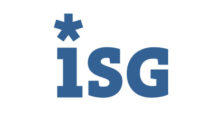How Blockchain helps with the digital transformation
The digital transformation is in the first place with the large number of enterprises. In a recent ISG study on this topic, Blockchain was identified as a great potential for companies. How the Blockchain can be used especially in the disruptive service area can be found here.
Blockchain is still mostly associated with bitcoins or other crypto currencies. But Blockchain is a much larger and above all disruptive service area, as the Information Services Group has now shown in its current study on the subject of digital transformation. Although currently only 700 applications use the Blockchain as a substructure, the technology offers far more application areas.
What possibilities does Blockchain offer?
Simply put, the Blockchain is a kind of distributed ledger or decentralized database that continuously maintains digital records of who owns what. This information can be synchronized over a network of replicated databases over the Internet and made visible to everyone within that network according to preference. As soon as a digital transaction is performed, it is sent to the network as a cryptographically protected block.
The decentralized, open and cryptographic character of the Blockchain creates a very high level of trust and provides people with the basis for peer-to-peer transactions, making intermediaries superfluous. In addition to cost savings, security risks are eliminated. For hackers, who normally attack large centralized servers, it is virtually impossible to break through the Blockchain because every single transaction in the network would have to be overwritten and its backups deleted.
Blockchain in the Financial sector
In the financial sector, the Blockchain offers the possibility of reducing transaction costs and paper use, on the one hand, and the possibility of setting up banks very cheaply, on the other. Many FinTech start-ups see this as a possibility, as crypto currencies in particular offer great potential.
The Blockchain offers above all financial institutions the possibility to keep up in the fast moving digital world. Through a decentralized network model, faster transactions and better data quality are possible without having to rely on a third party.
Use of Blockchain is versatile
As an example for financial institutions, insurance companies rely on technology to reform premium payments and claims processing, among other things. However, most insurers have a “Wait and Watch” policy, which follows the development of technologies but does not provide information about hazards and security risks.
The Blockchain also offers many opportunities in the retail sector. Especially in the digital retail market, Blockchian could become what Paypal is for the classified ad market.
In the health and life sciences sector, a large amount of value-added data is produced and stored in data silos. The use of Blockchain technology makes this data easier to process, enabling faster and more accurate diagnoses and more effective treatments at lower cost.
Positive expectations for the Blockchain
Many other industries have positive expectations of the use of Blockchain. It is already being traded as a reliable and cost-effective way to capture and validate financial and operational transactions over a distributed network.
This article is partially based on an article by the Information Services Group.
Source cover image: iStock/ NanoStockk
[plista]


